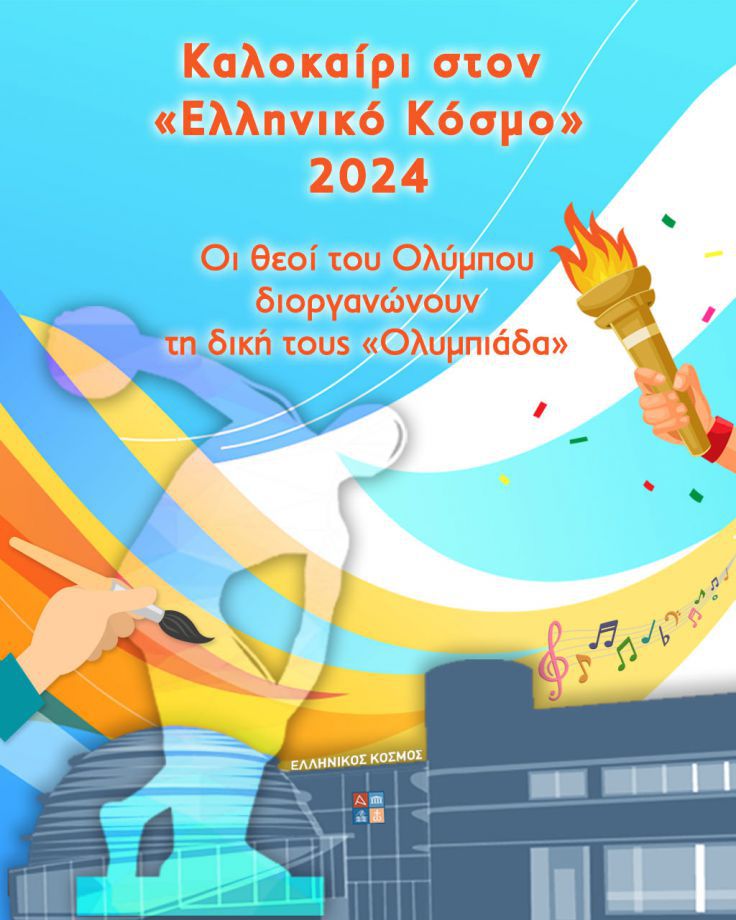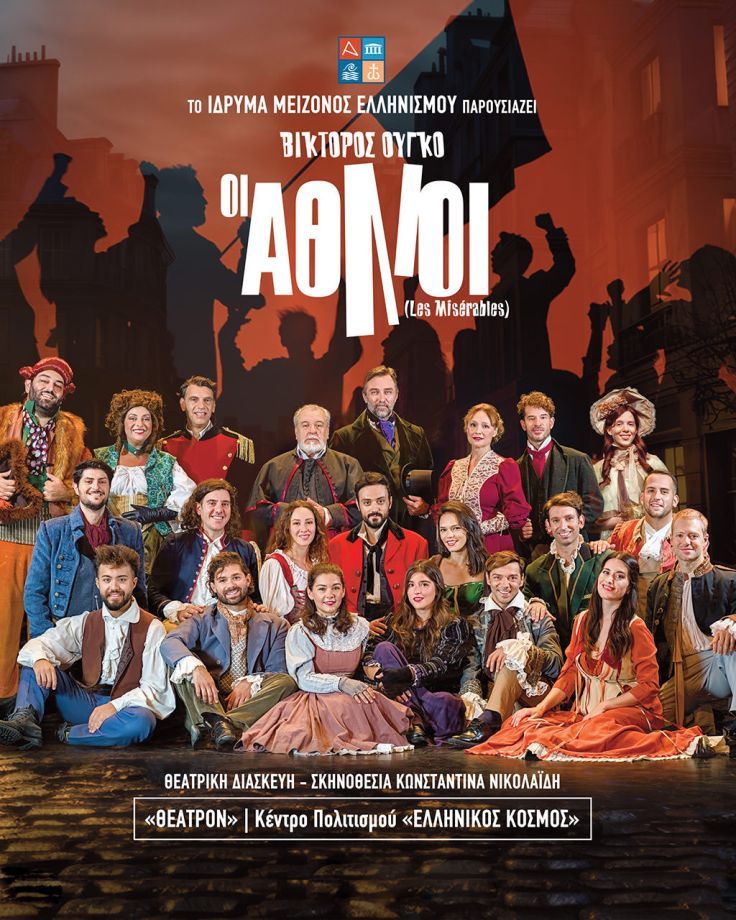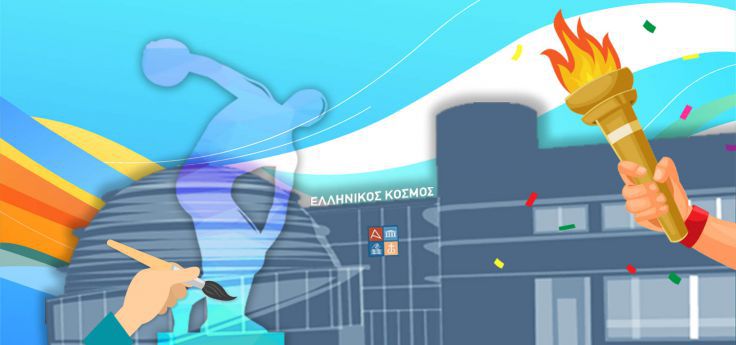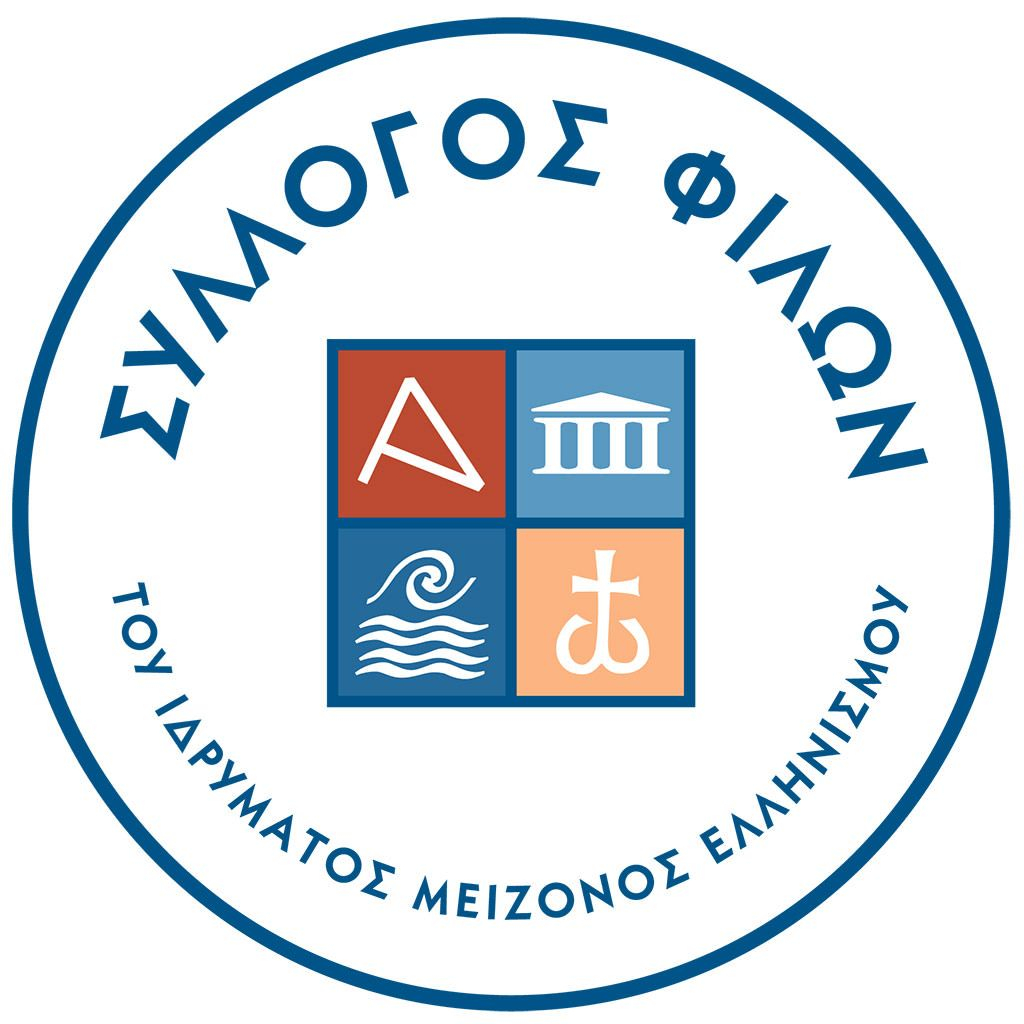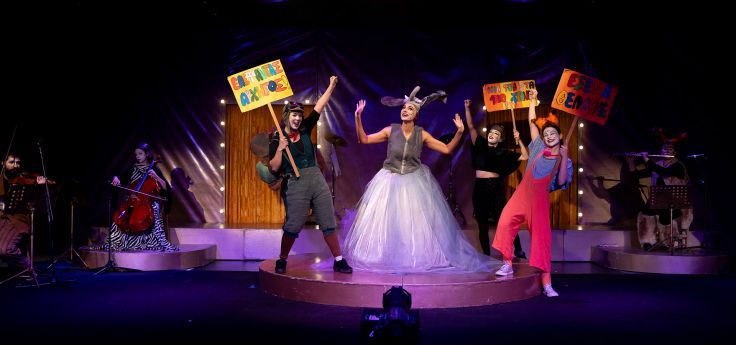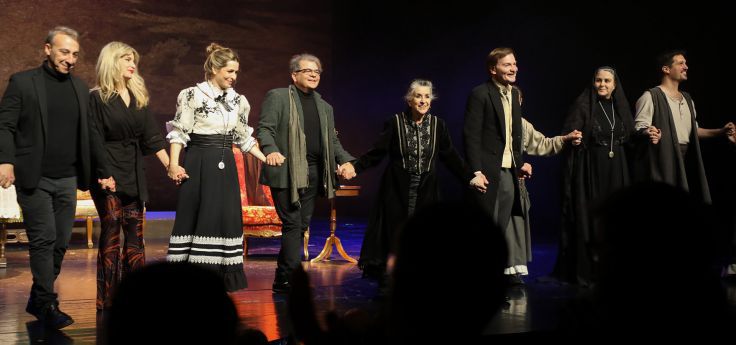Η «Περιήγηση στην Αρχαία Αγορά» που προβάλλεται στη «Θόλο» είναι εξ ολοκλήρου παραγωγή του Ιδρύματος και εντάσσεται στον ευρύτερο προσανατολισμό του σε θέματα ελληνικής ιστορίας και πολιτισμού. Χάρη στην τεχνολογική της υποδομή εμπλουτίζεται διαρκώς, ενώ η διαδραστικότητά της αφήνει περιθώρια στους θεατές να διαμορφώνουν τη δική τους πορεία κατά την περιήγηση και να βιώνουν κάθε φορά μια διαφορετική εμπειρία.
Οι θεατές ξεναγούνται στο χώρο της Αρχαίας Αγοράς και, με την καθοδήγηση ειδικού μουσειοπαιδαγωγού, έχουν τη δυνατότητα να επιλέξουν οι ίδιοι τη διαδρομή που θα ακολουθήσουν. Η αναπαράσταση της Αγοράς σε τρεις διαφορετικές στιγμές της ιστορίας της δίνει τη δυνατότητα στον επισκέπτη να αντιληφθεί την εξέλιξη μέσα στο χρόνο και τη μεταβολή των λειτουργιών του χώρου από εποχή σε εποχή, όπως αυτή αποτυπώνεται στις αρχιτεκτονικές και πολεοδομικές διαφοροποιήσεις της. Στην κλασική Αγορά (περί το 400 π.Χ.) τονίζεται η σημασία των δημόσιων διοικητικών κτηρίων και η ύπαρξη ενός μεγάλου ανοιχτού χώρου για συναθροίσεις και αθλητικές δραστηριότητες. Στα Ελληνιστικά χρόνια (περί το 150 π.Χ.) δεσπόζουν τα μεγάλα εμπορικά κτήρια (στοές) και δίνεται έμφαση στην ευεργετική δράση των ελληνιστικών ηγεμόνων. Τέλος, η ρωμαϊκή εικόνα της Αγοράς (περί το 150 μ.Χ.) αποτυπώνει τη σταδιακή της αποδυνάμωση ως διοικητικού και εμπορικού κέντρου, γεγονός που άφησε περιθώρια για την ανάπτυξη του θρησκευτικού και πολιτιστικού χαρακτήρα της, καθώς ανεγέρθηκαν καινούργιοι ναοί, ωδείο, βιβλιοθήκη και νυμφαίο..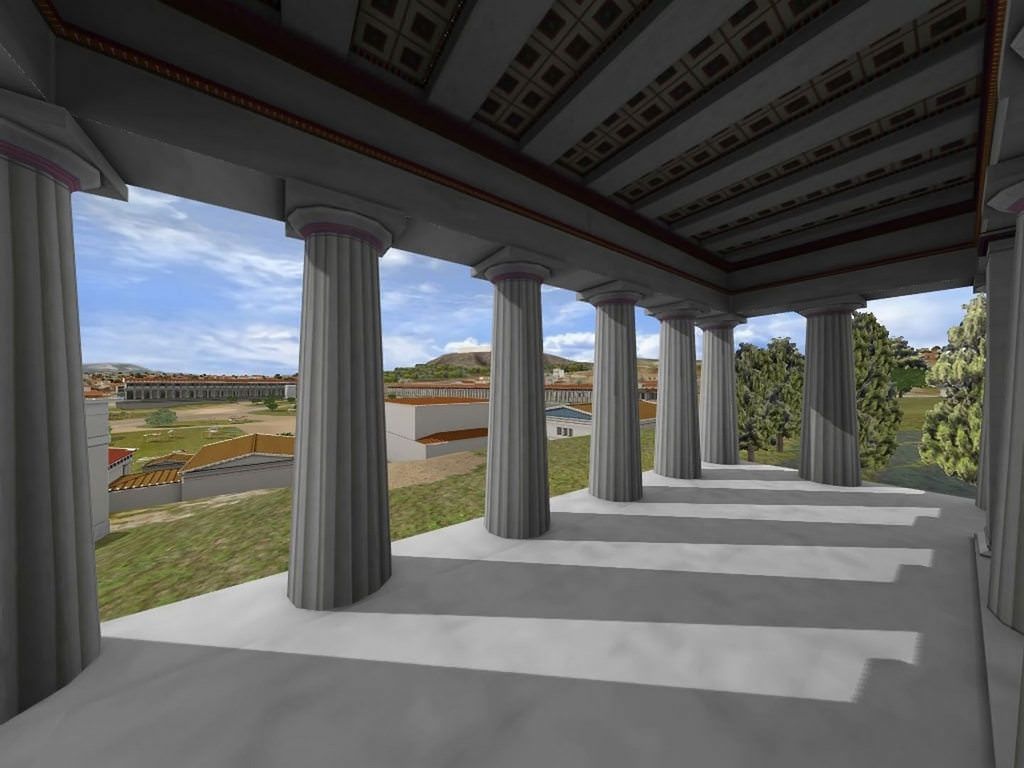
Για την υλοποίησή της έχουν συνεργαστεί επιστήμονες του ΙΜΕ, όλων των ειδικοτήτων, και εξωτερικοί συνεργάτες. Για την ευγενική παραχώρηση, προς χρήση στο έργο, της ψηφιακής εργασίας τους για την τοπογραφική απεικόνιση της ευρύτερης περιοχής της Αρχαίας Αγοράς της Αθήνας όπως είναι σήμερα, θερμές ευχαριστίες οφείλονται: στον Καθηγητή κ. Πέτρο Θέμελη, στην πρώην Διευθύντρια της Α' Εφορίας Κλασικών και Προϊστορικών Αρχαιοτήτων κα Άλκηστις Χωρέμη, στο Διευθυντή της ανασκαφής της Αρχαίας Αγοράς Καθηγητή κ. John Camp, στον αρχιτέκτονα της ανασκαφής της Αρχαίας Αγοράς Δρ. Richard Anderson και στους αρχιτέκτονες κ. Γιάννη Τσιώμη και κ. Γιώργο Ανδρεάδη. Επίσης, θερμές ευχαριστίες οφείλονται στην Α' Εφορία Προϊστορικών και Κλασικών Αρχαιοτήτων, για τη δυνατότητα πρόσβασης στο χώρο, την παροχή τεκμηριωτικού υλικού και γενικά την πλήρη υποστήριξή της, καθώς και στην Αμερικανική Αρχαιολογική Σχολή, για την παροχή τεκμηριωτικού υλικού και τη γενικότερη συμβολή της στο έργο.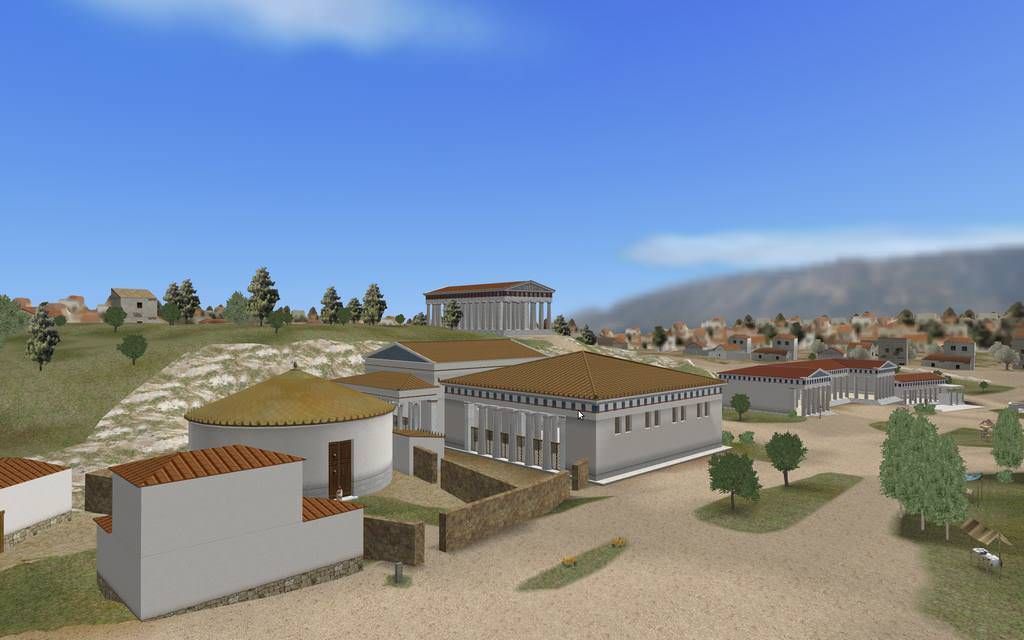
 Η ψηφιακή Συλλογή εικονικής πραγματικότητας «Η Αρχαία Αγορά της Αθήνας» χρηματοδοτήθηκε από το Επιχειρησιακό πρόγραμμα της Κοινωνίας της Πληροφορίας του Γ' ΚΠΣ (75% Ευρωπαϊκό Ταμείο Περιφερειακής Ανάπτυξης - 25% Εθνικοί Πόροι)
Η ψηφιακή Συλλογή εικονικής πραγματικότητας «Η Αρχαία Αγορά της Αθήνας» χρηματοδοτήθηκε από το Επιχειρησιακό πρόγραμμα της Κοινωνίας της Πληροφορίας του Γ' ΚΠΣ (75% Ευρωπαϊκό Ταμείο Περιφερειακής Ανάπτυξης - 25% Εθνικοί Πόροι)


